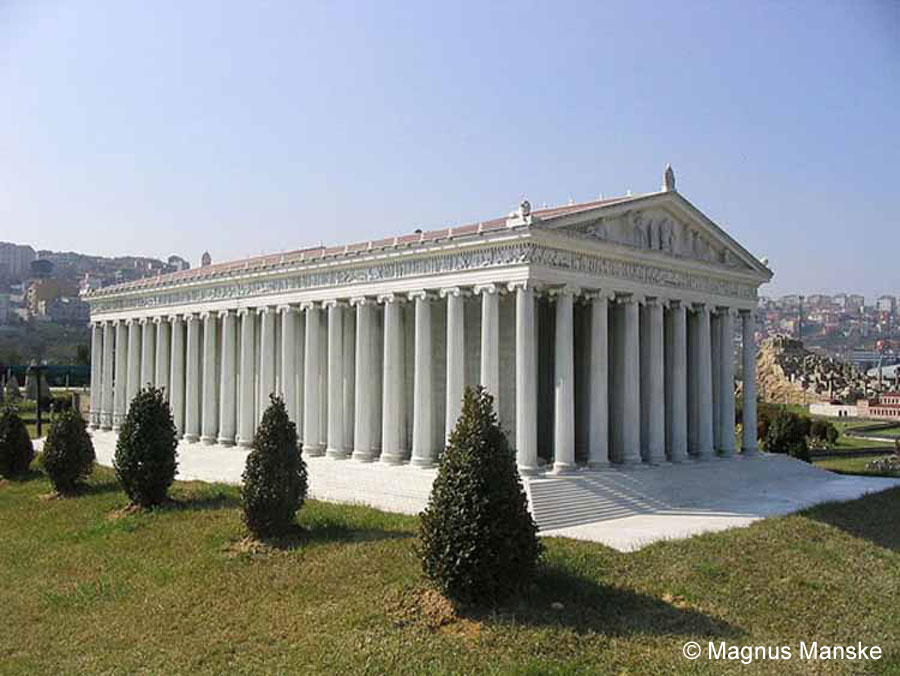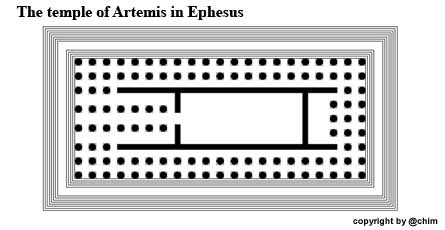 |
|
Ancient temples in Turkey Ephesus |
||||||||||||||||||||
 |
|
|||||||||||||||||||
|
||||||||||||||||||||
|
The temple of Artemis in Ephesus, or briefly the Artemision of Ephesus, was dedicated to the Olympic deity Artemis in its special form as Artemis Ephesia. It is said to have been founded by the Amazon queen Otrere and as the largest temple building belonged to the "Seven Wonders of the World" of antiquity. The ancient city of Ephesus was famous for its wealth and later, as the capital of the Roman province of Asia, one of the largest cities of antiquity. The area has been used continuously since the Bronze Age. The first temples (A + B) were built in the 8th century BC as wooden constructions. Temple "C" was allegedly built in the 7th century BC under the hardly known tyrant Pythagoras, who was destroyed by flooding before completion. The successor temple "D" was begun around 550 BC. The construction work on this temple lasted unusually long for ancient conditions with 120 years. The temple, built of a white-blue marble of the area, rose on a 111.7 m × 57.3 m large, only two-stage substructure. During the reign of the Roman emperor Gallienus, the magnificent building was destroyed by the Goths in 268 A.D. during a war campaign, and the remains were used by the inhabitants as building material. |
||||||||||||||||||||
| Artemis | ||||||||||||||||||||
|
In Greek mythology, Artemis is the goddess of hunting, the forest, the moon and the guardian of women and children. She is one of the twelve great Olympic gods and therefore one of the most important deities of Greek mythology. She is the daughter of Zeus and Leto, and the twin sister of Apollo. She corresponds to Diana in Roman mythology. |
||||||||||||||||||||
| The history of Ephesus: | ||||||||||||||||||||
|
|
||||||||||||||||||||
|
|
||||||||||||||||||||
|
|
||||||||||||||||||||
|
|
||||||||||||||||||||
| Photos: @chim, Monika P. | ||||||||||||||||||||
| Translation aid: www.DeepL.com/Translator | ||||||||||||||||||||
| Source: Wikipedia and others | ||||||||||||||||||||
|
|



